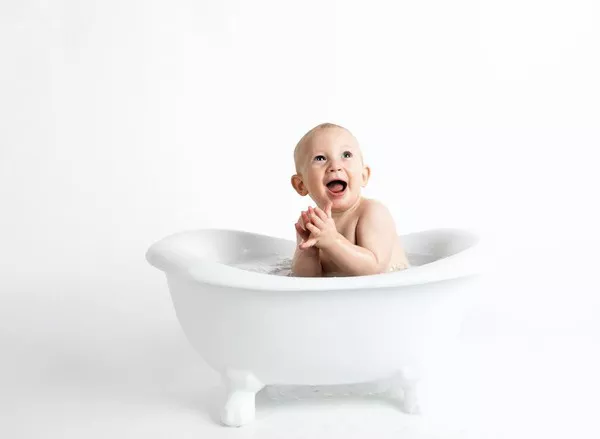Welcoming a newborn into the world is a joyous occasion, accompanied by the responsibility of providing proper care and hygiene. While bathing a newborn may seem daunting at first, sponge baths offer a gentle and safe approach to keeping your little one clean. In this article, we will explore the importance of sponge baths for newborns, when and how often they should be given, and helpful tips to make the experience enjoyable for both you and your baby.
Why Sponge Baths?
Newborns have delicate skin that requires special attention and care. Sponge baths are recommended during the first few weeks of life to ensure their safety and comfort. Unlike traditional bathing methods that involve submerging the baby in water, sponge baths allow you to clean your newborn without exposing them to excessive moisture or temperature fluctuations.
When to Start Sponge Baths:
Typically, healthcare professionals recommend starting sponge baths once the umbilical cord stump has fallen off and the navel area has healed completely. This usually occurs within the first two weeks of the baby’s life. However, it is essential to follow your healthcare provider’s specific guidance, as individual circumstances may vary.
How Often Should You Give a Newborn a Sponge Bath?
The frequency of sponge baths for newborns depends on various factors, including the baby’s health, the climate, and personal preference. Generally, a sponge bath two to three times a week is sufficient to maintain proper hygiene for your newborn. However, if your baby has diaper blowouts, spit-ups, or excessive drooling, you may consider more frequent sponge baths as needed.
Tips for Giving a Sponge Bath:
Gather Supplies: Before starting a sponge bath, gather all the necessary supplies in a warm and comfortable area. You will need a soft washcloth, mild baby soap or cleanser, lukewarm water, a towel, a diaper, and a change of clothes.
Maintain a Safe Environment: Ensure the room is warm, free from drafts, and without any sharp objects or hazards nearby. Keep the bathing area secure and within your reach at all times.
Start with the Face: Begin the sponge bath by gently wiping your baby’s face with a damp washcloth. Use plain water or a mild baby cleanser specifically formulated for newborns. Pay attention to the folds around the neck and ears.
Move to the Body: Gradually move down to clean the rest of the baby’s body. Take care to clean all the creases, such as under the arms, between fingers and toes, and the diaper area. Use a gentle touch and avoid excessive rubbing.
Be Mindful of the Umbilical Cord Stump: During the first few weeks, the umbilical cord stump requires special care. Clean the area gently with a damp cloth, ensuring it remains dry afterwards. Follow your healthcare provider’s instructions for caring for the umbilical cord stump.
Monitor Water Temperature: Maintain a comfortable water temperature for your baby by testing it with your elbow or a thermometer. The water should be lukewarm, around 100°F (37°C). Avoid using hot water that could burn your baby’s delicate skin.
Bonding and Soothing: Sponge baths can be an opportunity for bonding and relaxation. Talk to your baby in a calm and soothing voice, maintain eye contact, and offer gentle touches. This helps create a positive experience and strengthens the parent-child bond.
Pat Dry and Dress: After the sponge bath, pat your baby’s skin dry with a soft towel. Pay close attention to drying the skin folds thoroughly to prevent moisture buildup. Dress your baby in clean clothes and ensure they are comfortably warm.
Enjoy the Experience: Remember, sponge baths are more than just a hygiene routine; they are moments of connection and care. Embrace the opportunity to enjoy the closeness with your baby and create a positive bathing experience.
As your baby grows, you can gradually transition to traditional tub baths once they have gained head and neck control. Always prioritize safety, maintain proper hygiene, and follow the guidance of your healthcare provider throughout your baby’s bathing journey.
In conclusion, sponge baths are a gentle and effective way to keep your newborn clean and comfortable during the early weeks of life. By following proper techniques, maintaining a safe environment, and engaging in positive bonding experiences, you can make sponge baths an enjoyable and nurturing routine for both you and your baby.


